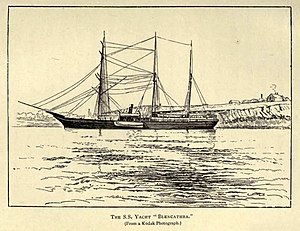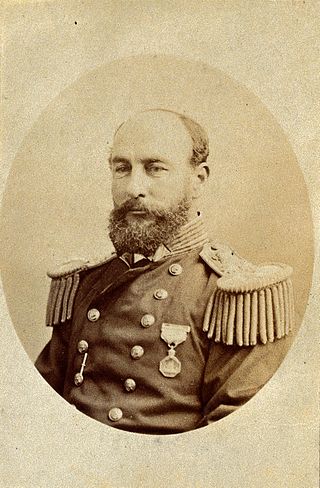
Vice-Admiral Sir George Strong Nares was a Royal Navy officer and Arctic explorer. He commanded the Challenger Expedition, and the British Arctic Expedition. He was highly thought of as a leader and scientific explorer. In later life he worked for the Board of Trade and as Acting Conservator of the River Mersey.
Eleven ships of the Royal Navy and a reserve shore establishment of the Canadian Navy have borne the name HMS/HMCS Discovery, while ships of other branches have also used the name:

HMS Hecla was a Royal Navy Hecla-class bomb vessel launched in 1815. Like many other bomb vessels, she was named for a volcano, in this case Hekla in southern Iceland. She served at the Bombardment of Algiers in 1816. Subsequently, she took part in three expeditions to the Arctic. She then served as a survey vessel on the coast of West Africa until she was sold in 1831. She became a merchantman and in 1834 a Greenland whaler. She was wrecked in 1840.

HMS Challenger was a Pearl-class corvette of the Royal Navy launched on 13 February 1858 at the Woolwich Dockyard. She served the flagship of the Australia Station between 1866 and 1870.
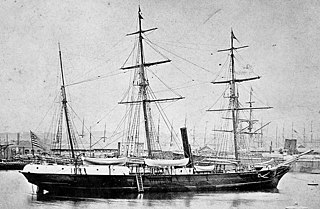
USSJeannette was a naval exploration vessel which, commanded by George W. De Long, undertook the Jeannette expedition of 1879–1881 to the Arctic. After being trapped in the ice and drifting for almost two years, the ship and her crew of 33 were released from the ice, then trapped again, crushed and sunk some 300 nautical miles north of the Siberian coast. The entire crew survived the sinking, but eight died while sailing towards land in a small cutter. The others reached Siberia, but 12 subsequently perished in the Lena Delta, including De Long.

Valerian Ivanovich Albanov was a Russian navigator, best known for being one of two survivors of the Brusilov expedition of 1912, which killed 22.
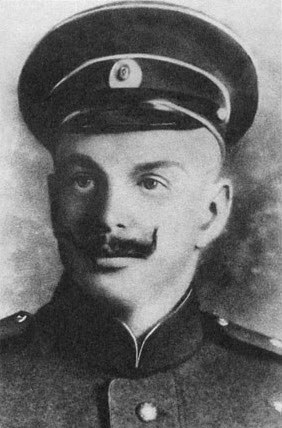
Georgy Lvovich Brusilov was a Russian naval officer of the Imperial Russian Navy and an Arctic explorer. His father, Lev Brusilov, was also a naval officer.

Wiese Island, or Vize Island, also known as Zemlya Vize is an isolated Russian island located in the Arctic Ocean, named after Soviet oceanographer of German-descent Vladimir Wiese.
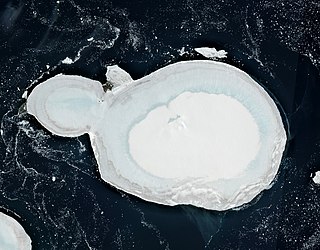
Eva-Liv Island, alternatively transcribed as Yeva-Liv Island, and also known as Eva Island, is the northeasternmost island in Franz Josef Land, Arkhangelsk Oblast, Russian Arctic.

Alexander Eduardovich Konrad was a Russian sailor. Along with Valerian Albanov, he was one of two survivors, and the only surviving sailor, of the Brusilov expedition in which 22 people died.

HMS Philomel, later HMNZS Philomel, was a Pearl-class cruiser. She was the fifth ship of that name and served with the Royal Navy. After her commissioning in 1890, she served on the Cape of Good Hope Station and later with the Mediterranean Fleet.

The Cherokee class was a class of brig-sloops of the Royal Navy, mounting ten guns. Brig-sloops were sloops-of-war with two masts rather than the three masts of ship sloops. Orders for 115 vessels were placed, including five which were cancelled and six for which the orders were replaced by ones for equivalent steam-powered paddle vessels.

HMS Alert was a 17-gun wooden screw sloop of the Cruizer class of the Royal Navy, launched in 1856 and broken up in 1894. She was the eleventh ship of the Royal Navy to bear the name, and was noted for her Arctic exploration work; in 1876 she reached a record latitude of 82° North. Alert briefly served with the US Navy, and ended her career with the Canadian Marine Service as a lighthouse tender and buoy ship.
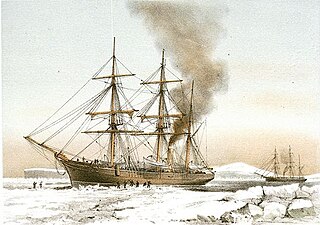
HMS Discovery was a wood-hulled screw expedition ship, and later storeship, formerly the sealing ship Bloodhound built in 1873 in Dundee. She was purchased in 1874 for the British Arctic Expedition of 1875–1876 and later served as a store ship. Discovery was sold in 1902, reverting to the name Bloodhound and her previous sealing trade. The ship was wrecked in Newfoundland in 1917.
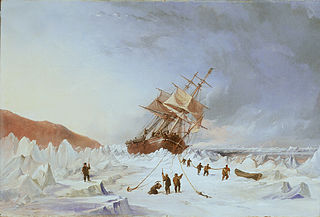
HMS Assistance was an Arctic discovery barque of the Royal Navy, and the sixth vessel to carry the name. She began in 1834 as the India-built merchant vessel Acorn. Her name was changed to Baboo. Under that name she transported contract labourers between Mauritius and India, and immigrants to South Australia. The Royal Navy purchased her in 1850 and named her HMS Assistance. Assistance participated in two Arctic expeditions before her crew abandoned her in the ice in 1854.
HMS Malabar was a 56-gun fourth rate of the Royal Navy. She had previously been the East Indiaman Cuvera, launched at Calcutta in 1798. She made one voyage to London for the British East India Company and on her return to India served as a transport and troopship to support General Baird's expedition to Egypt to help General Ralph Abercromby expel the French there. The Navy bought her in 1804 and converted her to a storeship in 1806. After being renamed HMS Coromandel she became a convict ship and made a trip carrying convicts to Van Diemen's Land and New South Wales in 1819. She spent the last 25 years of her career as a receiving ship for convicts in Bermuda before being broken up in 1853.

HMS Mullett was a Royal Navy 5-gun Philomel-class wooden screw gunvessel launched in 1860. She served on the coast of West Africa and on the North America and West Indies Station before being sold in 1872 at Hong Kong for mercantile use. As the sailing ship Formosa she sailed in the Far East before being converted to a magazine in Melbourne.
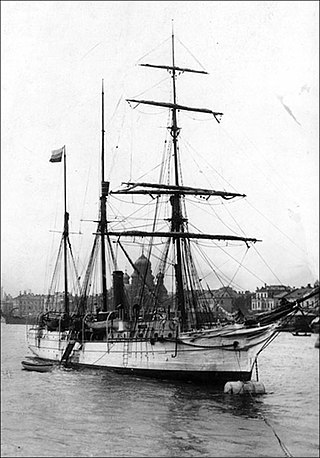
The Brusilov expedition was a Russian maritime expedition to the Arctic led by Captain Georgy Brusilov, which set out in 1912 to explore and map a route from the Atlantic Ocean to the Pacific via a northeast passage known as the Northern Sea Route. The expedition was ill-planned and ill-executed by Brusilov, and disappeared without a trace. Earlier searches were unsuccessful, and the fate of the ship and its crew is still not known.

The Philomel-class gunvessel was a class of wooden-hulled screw-driven second-class gunvessels built for the Royal Navy between 1859 and 1867, of which 26 were ordered but only 20 completed. They had a mixed history, with some serving for as little as 5 years, and others surviving into the 1880s. Two of the class were sold and used as Arctic exploration vessels, both eventually being lost in the ice.

HMS Swallow was a 14-gun Merlin-class sloop of the Royal Navy. Commissioned in 1745, she initially served in home waters as a convoy escort and cruiser before sailing to join the East Indies Station in 1747. There she served in the squadron of Rear-Admiral Edward Boscawen, taking part in an aborted invasion of Mauritius and the Siege of Pondicherry. In 1755 Swallow returned home to join the Downs Station, as part of which she fought at the Raid on St Malo, Raid on Cherbourg, and Battle of Saint Cast in 1758. She was also present when the French fleet broke out of Brest prior to the Battle of Quiberon Bay in 1759.
